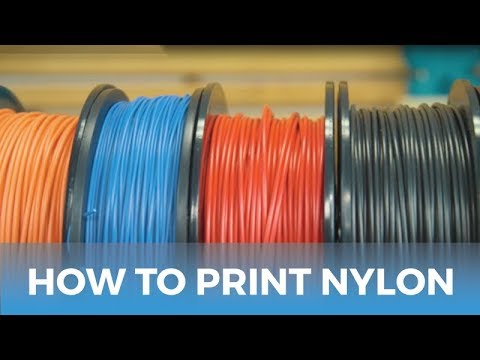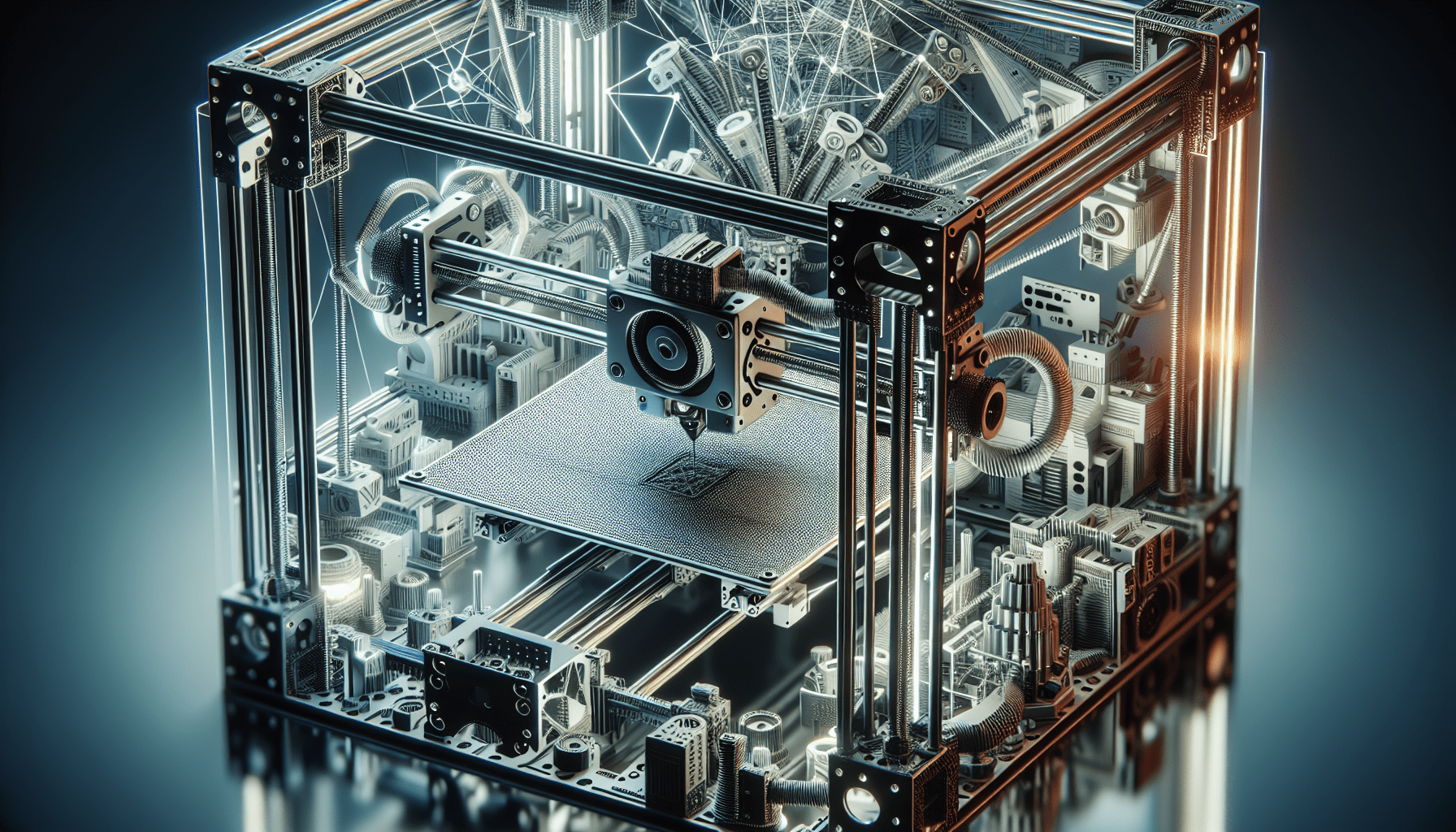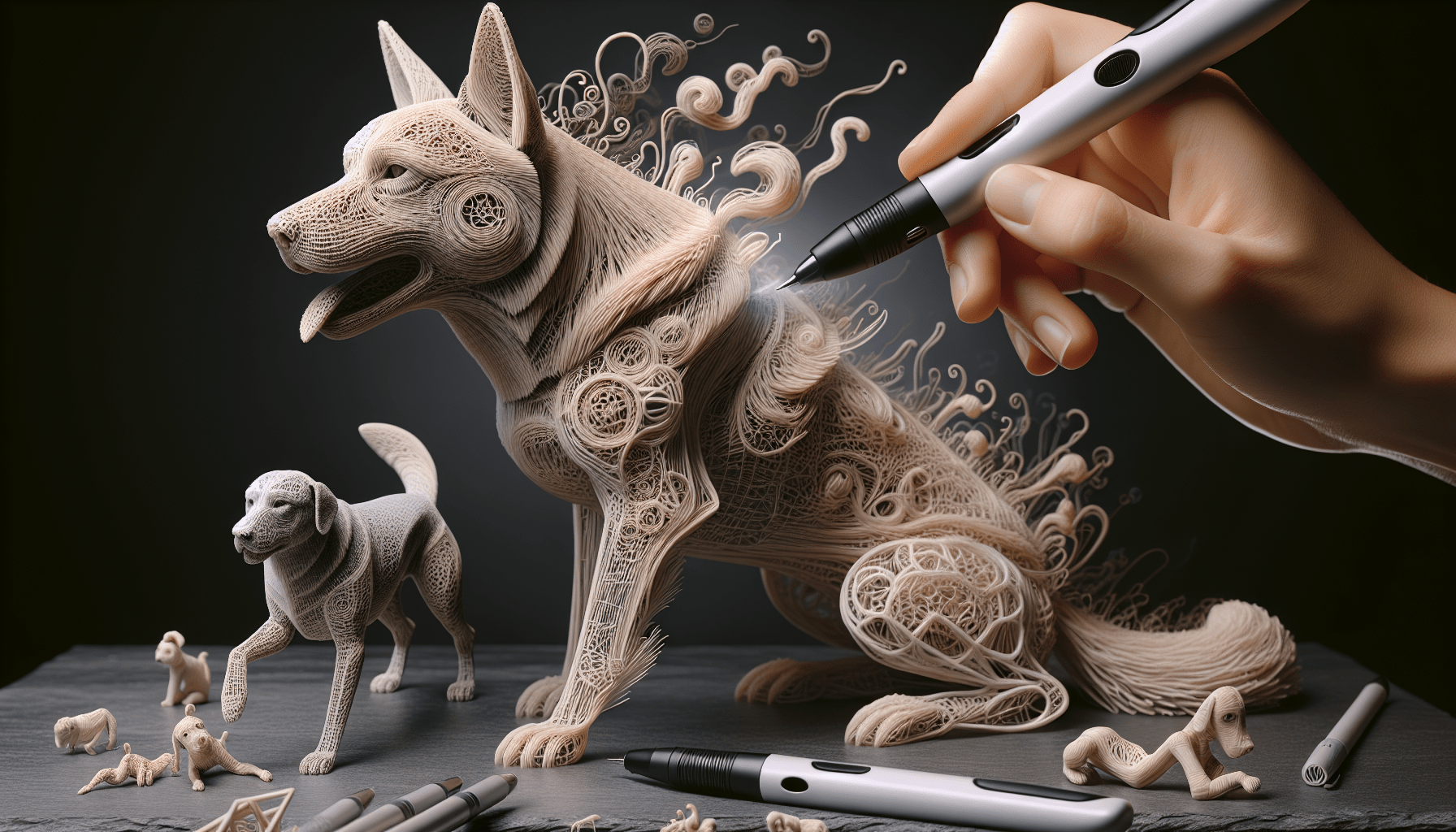FLASHFORGE Adventurer 5M 3D Printer, 600mm/s High-Speed, 1 Click Fully Auto Leveling, Upgraded Direct extruder Quick Detachable 280°C Nozzle, Dual-Sided PEI Coating Plate, Print Size 220x220x220mm
$259.00 (as of June 19, 2025 23:45 GMT +00:00 - More infoProduct prices and availability are accurate as of the date/time indicated and are subject to change. Any price and availability information displayed on [relevant Amazon Site(s), as applicable] at the time of purchase will apply to the purchase of this product.)In this informative tutorial video by MatterHackers, Alec guides you through the process of successfully 3D printing with nylon filament. Nylon is a versatile and commonly used material that is known for its strength and durability. However, it can be a bit challenging to print with due to its unique properties. Alec shares his expert tips and tricks to help you navigate the potential difficulties of printing with nylon, such as using all-metal hotends, ensuring proper bed adhesion, calibrating print temperatures, and more. Whether you’re a beginner or an experienced 3D printer, this tutorial is sure to provide you with valuable insights and techniques to achieve great results when working with nylon filament.
With Alec as your guide, you’ll discover the importance of using all-metal hotends to achieve the necessary high temperatures for successful nylon printing. He also emphasizes the significance of getting your first layer right, sharing valuable tips on Z offset adjustment. Proper bed adhesion is crucial, and Alec explores different materials and techniques to ensure your prints stick well. He also tackles the calibration of print temperatures, noting that it can vary depending on your printer. Alec also offers advice on layer cooling fans, print speeds, and keeping nylon dry to avoid moisture absorption. By following these expert tips, you’ll be well equipped to overcome the challenges of 3D printing with nylon filament and achieve exceptional results in your printing projects.
Tip 1: All-Metal Hotends
When it comes to successfully 3D printing with nylon filament, one of the key considerations is the hotend that you use. Traditional PTFE-lined hotends have limitations when it comes to printing with nylon, as the PTFE lining can start to break down at temperatures around 240 degrees Celsius. However, nylon typically requires a minimum printing temperature of 250 degrees Celsius.
To overcome this limitation, it is recommended to upgrade to an all-metal hotend, such as the e3d V6. An all-metal hotend can withstand higher temperatures, allowing you to print nylon more effectively. The e3d V6, for example, can reach temperatures of up to 300 degrees Celsius, making it suitable for nylon printing.
Printing at higher temperatures is crucial for successful nylon printing, as it ensures proper melting and layer adhesion. By upgrading to an all-metal hotend, you can achieve the necessary temperature for printing nylon and produce high-quality prints.
Tip 2: Correct First Layer
Achieving a proper first layer is essential for successful 3D printing with nylon filament. If the first layer is not properly adhered to the build surface, it can result in failed prints or poor print quality. It is important to find the delicate balance between printing too close to the bed and too far away.
To ensure optimal adhesion, it is recommended to adjust the Z offset. Moving the Z offset up slightly, around 0.05 millimeters, can help improve adhesion without causing the first layer to rip off. However, finding the right Z offset may require some experimentation and adjustments.
It’s important to note that each printer may have different settings for achieving the correct first layer with nylon filament. By experimenting with different settings, such as the Z offset, you can find the configuration that works best for your specific printer.

Tip 3: Print Bed Material and Adhesion
When it comes to printing with nylon filament, the choice of print bed material and adhesion method can greatly impact the success of your prints. Nylon typically requires a heated bed to ensure proper adhesion and prevent warping.
Maintaining a bed temperature of around 60 degrees Celsius is recommended for printing with nylon. This temperature helps the nylon filament adhere to the bed without causing excessive warping or deformation.
Additionally, applying a PVA glue smear on the print bed can significantly improve adhesion. The PVA glue provides a surface that the nylon can adhere to, ensuring that it stays in place throughout the printing process. Heated glass with a PVA glue smear is often considered the best choice for printing with nylon.
While other print bed materials like Buildtak or PEI may not adhere well to nylon, you can improve adhesion by applying a glue stick over these surfaces. Another option is using Gera Light, an unheated print bed material that also provides good adhesion for nylon filament.
Tip 4: Calibrating Print Temperature
To achieve optimal print results with nylon filament, it is important to calibrate the print temperature according to your specific printer. Different printers may have variations in temperature readings due to firmware differences, so it’s necessary to adjust the temperature accordingly.
Start by selecting a baseline temperature, such as 250 degrees Celsius, and print small test cubes. Evaluate the layer adhesion and overall print quality, and if needed, make adjustments to the temperature in increments of 5 degrees Celsius. Keep testing and making adjustments until you find the temperature that produces the best results.
Calibrating the print temperature can greatly impact the quality and strength of your nylon prints. Finding the right temperature ensures proper melting of the filament and allows for strong layer adhesion.

Tip 5: Layer Cooling Fans
While layer cooling fans are beneficial for materials like PLA, they can have a negative impact when printing with nylon filament. Nylon is susceptible to warping and poor layer adhesion when exposed to rapid cooling.
It is recommended to turn off layer cooling fans when printing with nylon. Keeping the fans off allows the layers to cool more slowly, reducing the risk of warping and improving adhesion between layers.
Experiments conducted by 3D printing enthusiasts have shown that leaving layer cooling fans on while printing nylon can result in prints with little to no layer adhesion. This lack of adhesion can cause the printed objects to fail under stress or easily shear.
By disabling the layer cooling fans, you can achieve better print quality and stronger prints with nylon filament.
Tip 6: Print Speeds
When it comes to print speeds for nylon filament, it is generally advised to maintain similar speeds as with other materials like PLA and ABS. Nylon can be printed at speeds ranging from 10 millimeters per second to 80 millimeters per second, depending on the printer and specific filament.
Experimentation is key when determining the optimal print speed for nylon. Start with the speeds that work well for PLA and ABS, and gradually adjust the speed settings to find the sweet spot that produces high-quality prints with nylon filament.
Finding the right print speeds ensures proper extrusion and layer adhesion, resulting in successful prints with nylon.

Tip 7: Keeping Nylon Dry
One of the critical factors when working with nylon filament is its hygroscopic nature. Nylon readily absorbs moisture from the surrounding air, which can negatively affect print quality and performance.
To keep nylon filament dry, it is essential to remove any absorbed moisture before printing. While using desiccant packets can help to a certain extent, a more effective method is to dry the nylon filament in an oven.
If you have access to a vacuum oven, you can place the nylon filament inside and heat it at around 180 to 200 degrees Fahrenheit for approximately 15 minutes. Turning on the vacuum function will help remove the moisture from the filament. However, if a vacuum oven is not available, you can use a regular kitchen oven set to the same temperature for a longer duration, typically around 6 to 8 hours.
After drying the filament, store it in a sealed container with desiccant to prevent moisture absorption until you are ready to use it for printing.
Tip 8: Post-Processing
Nylon filament exhibits resilience against typical post-processing techniques, such as sanding. Unlike PLA or ABS, sanding may not effectively remove layer lines or smooth the surface of nylon prints.
To achieve a smoother finish, alternative methods can be employed. One option is to use resins like XTC-3D or epoxy resin to coat the printed object. These resins create a smooth surface and help mask the layer lines, resulting in a more professional-looking finish.
Another technique is to use flexible paint. By applying a coat of flexible paint, you can enhance the appearance of the nylon print while adding some additional strength.
If you are looking to change the color of your nylon prints, there is a wider range available now with Pro Series nylon filament. However, if the desired color is not available, you can dye white nylon filament using fabric dyes designed for polyesters. This allows you to customize the color of your prints.
In conclusion, succeeding in 3D printing with nylon filament requires careful consideration of various factors, such as the hotend used, print bed settings, temperature calibration, and post-processing techniques. By following these tips and experimenting with different settings, you can achieve high-quality prints with nylon filament. Nylon’s versatility and durability make it an excellent choice for functional prints in various applications.
Nylon filament can be challenging to print. That’s why we’ve made a detailed video to help you succeed! Alec will guide you through all the necessary steps to print this versatile, strong, and functional filament.
Learn more about 3D printing with Nylon filament here.
Find PRO Series Nylon here.
Find the best 3D printer for your specific application here.
Explore MatterHackers here.
If you want to see more 3D printing and making awesomeness, subscribe to our channel and turn on the notifications to receive the latest and greatest 3D printing information straight to your inbox!











